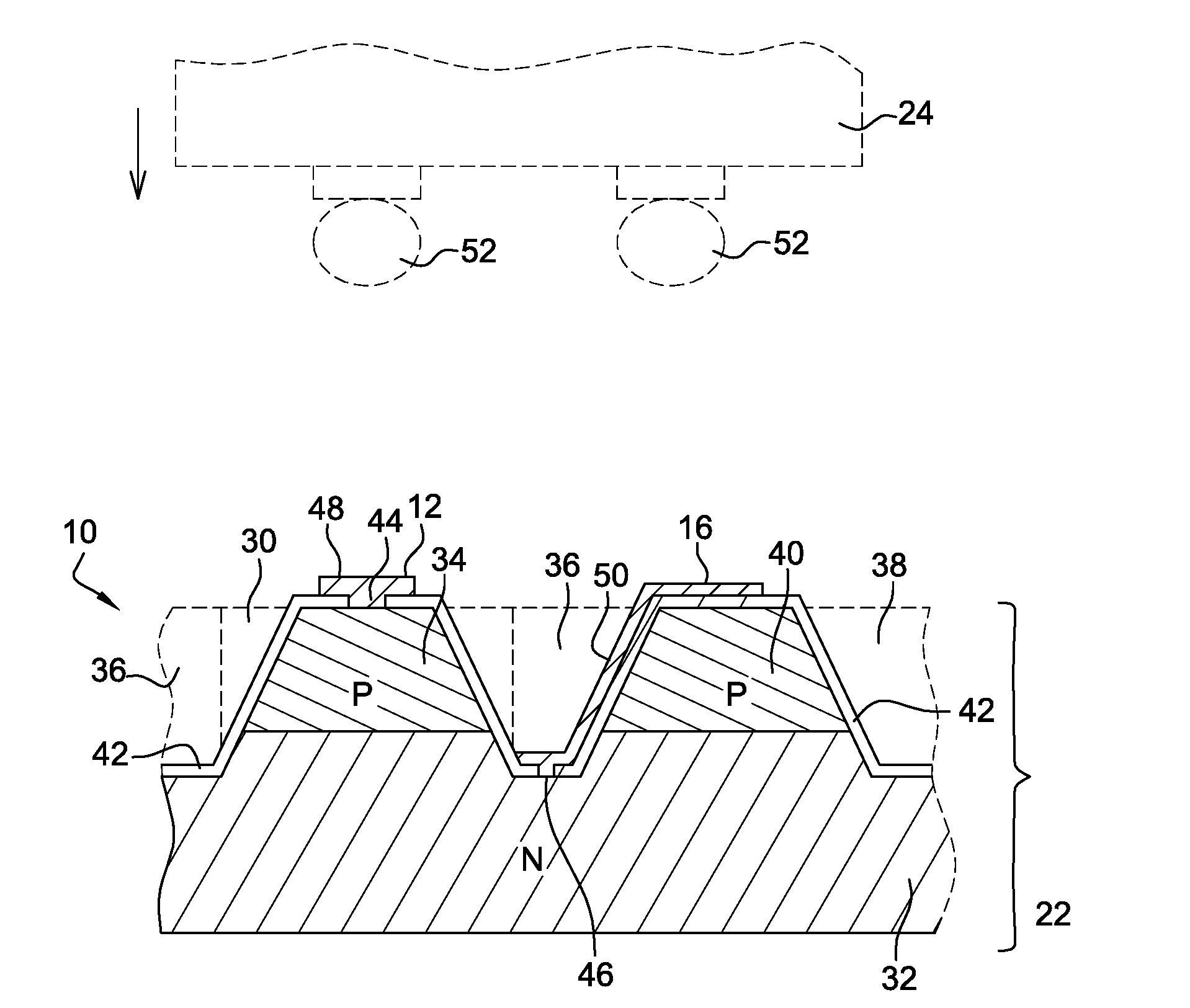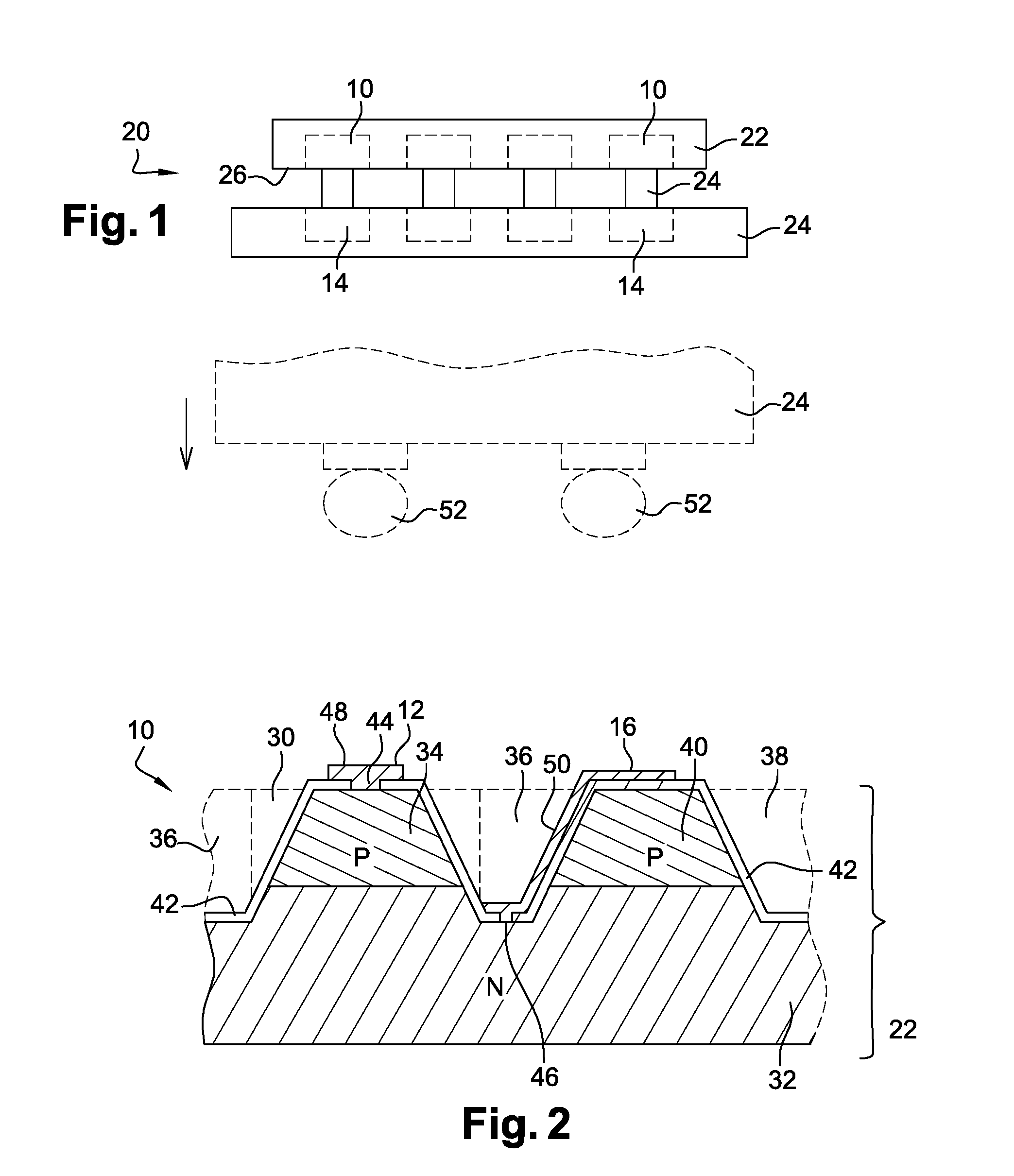Method of manufacturing a plurality of island-shaped dipoles having self-aligned electrodes
a technology of self-alignment and dipoles, which is applied in the direction of diodes, electric devices, solid-state devices, etc., can solve the problems of increasing difficulty, increasing the number of components per surface area, and affecting the accuracy of manufacturing methods, so as to achieve the effect of easy connection of dipoles
- Summary
- Abstract
- Description
- Claims
- Application Information
AI Technical Summary
Benefits of technology
Problems solved by technology
Method used
Image
Examples
Embodiment Construction
[0044]A first embodiment of the method of collective manufacturing of an array of island-shaped dipoles will now be described in relation with FIGS. 3 to 15, the array being intended to be subsequently hybridized with an external circuit for the electric connection of each dipole.
[0045]The method starts (FIG. 3) with the forming of a plate 60 containing all the active materials forming the dipoles. Plate 60 is divided between a first thickness 62 of value “h” where the islands will be formed and a second thickness 64 forming the base which will support the islands.
[0046]Plates 60 used in the context of the manufacturing of an array of photodiodes are illustrated in FIGS. 4A-4D, which are for example detail views of box A of FIG. 3.
[0047]For example (FIG. 4A), plate 60 comprises a layer 200 of N-type semiconductor material having a layer 202 of P-type semiconductor material deposited thereon, the manufacturing of the islands comprising individualizing volumes 66 formed across the ent...
PUM
| Property | Measurement | Unit |
|---|---|---|
| height | aaaaa | aaaaa |
| height | aaaaa | aaaaa |
| thickness | aaaaa | aaaaa |
Abstract
Description
Claims
Application Information
 Login to View More
Login to View More - R&D
- Intellectual Property
- Life Sciences
- Materials
- Tech Scout
- Unparalleled Data Quality
- Higher Quality Content
- 60% Fewer Hallucinations
Browse by: Latest US Patents, China's latest patents, Technical Efficacy Thesaurus, Application Domain, Technology Topic, Popular Technical Reports.
© 2025 PatSnap. All rights reserved.Legal|Privacy policy|Modern Slavery Act Transparency Statement|Sitemap|About US| Contact US: help@patsnap.com



